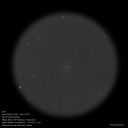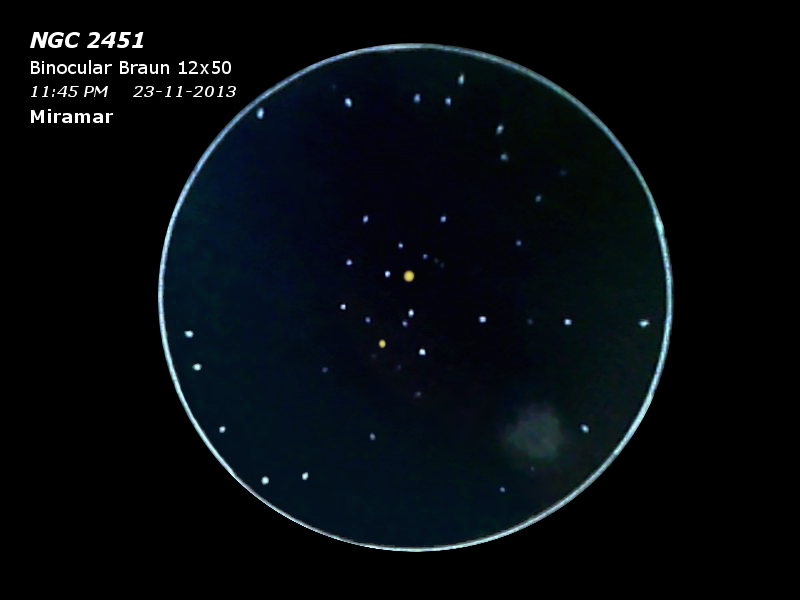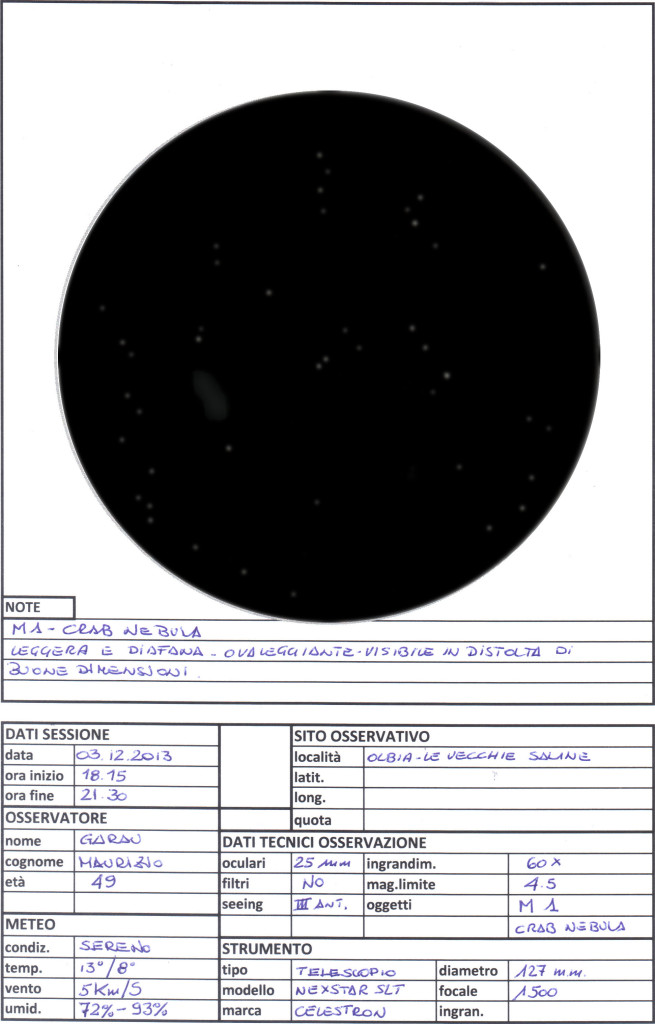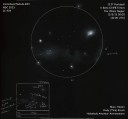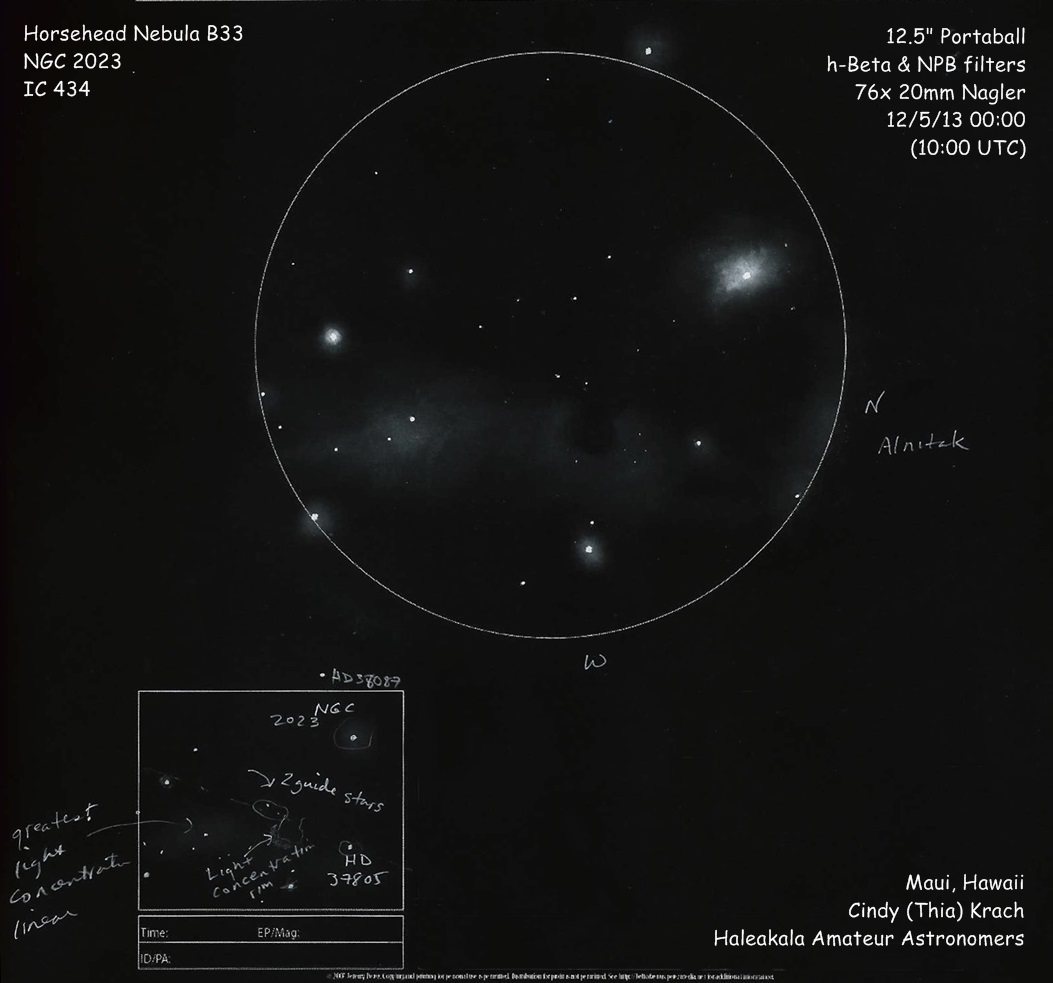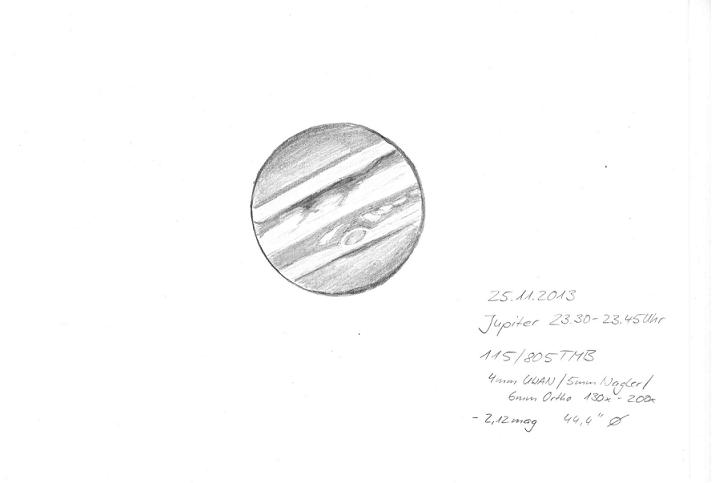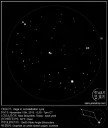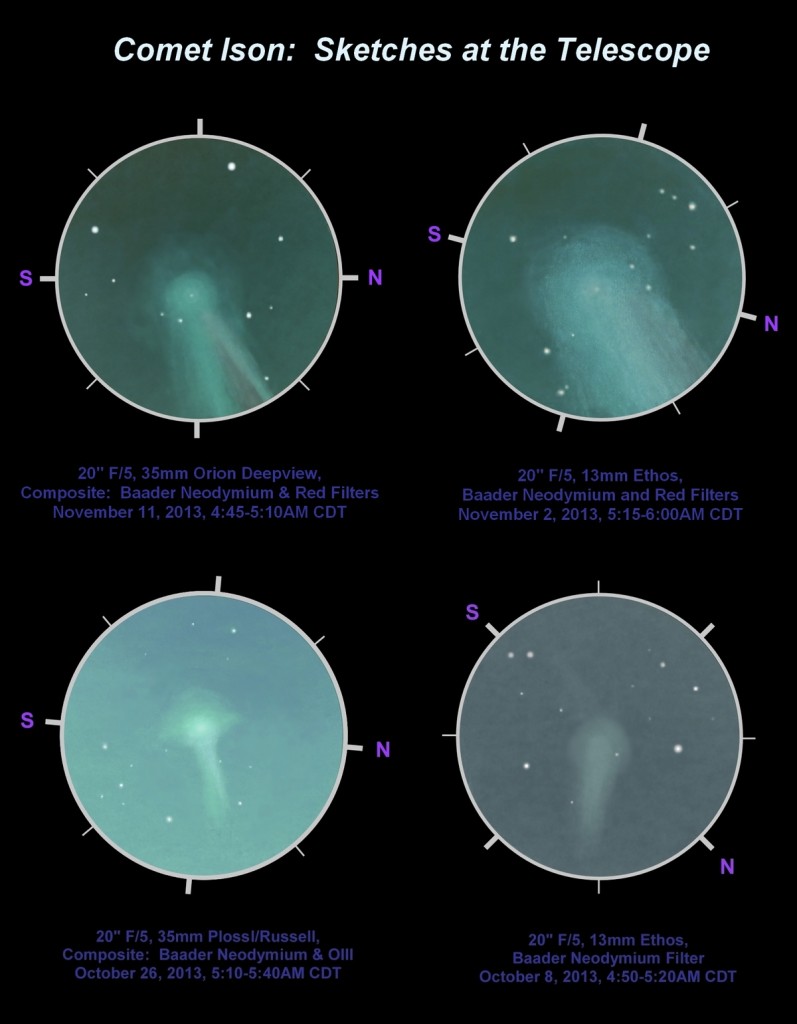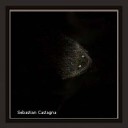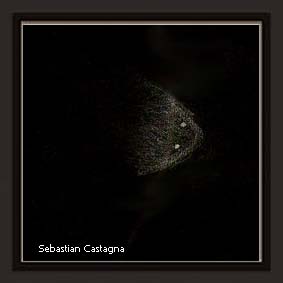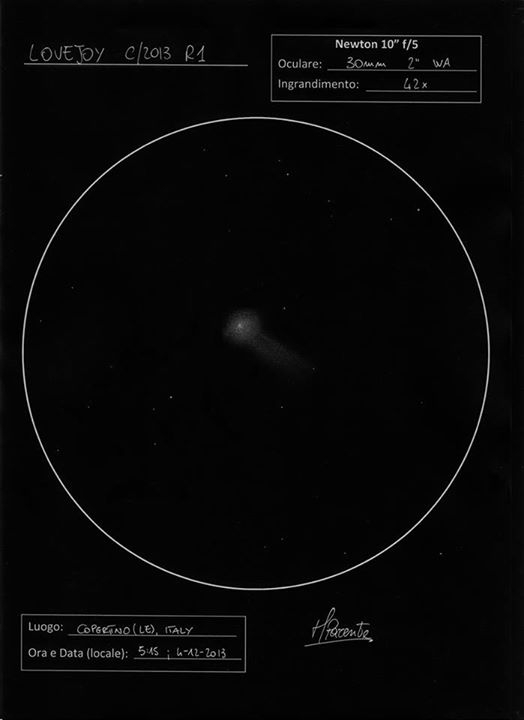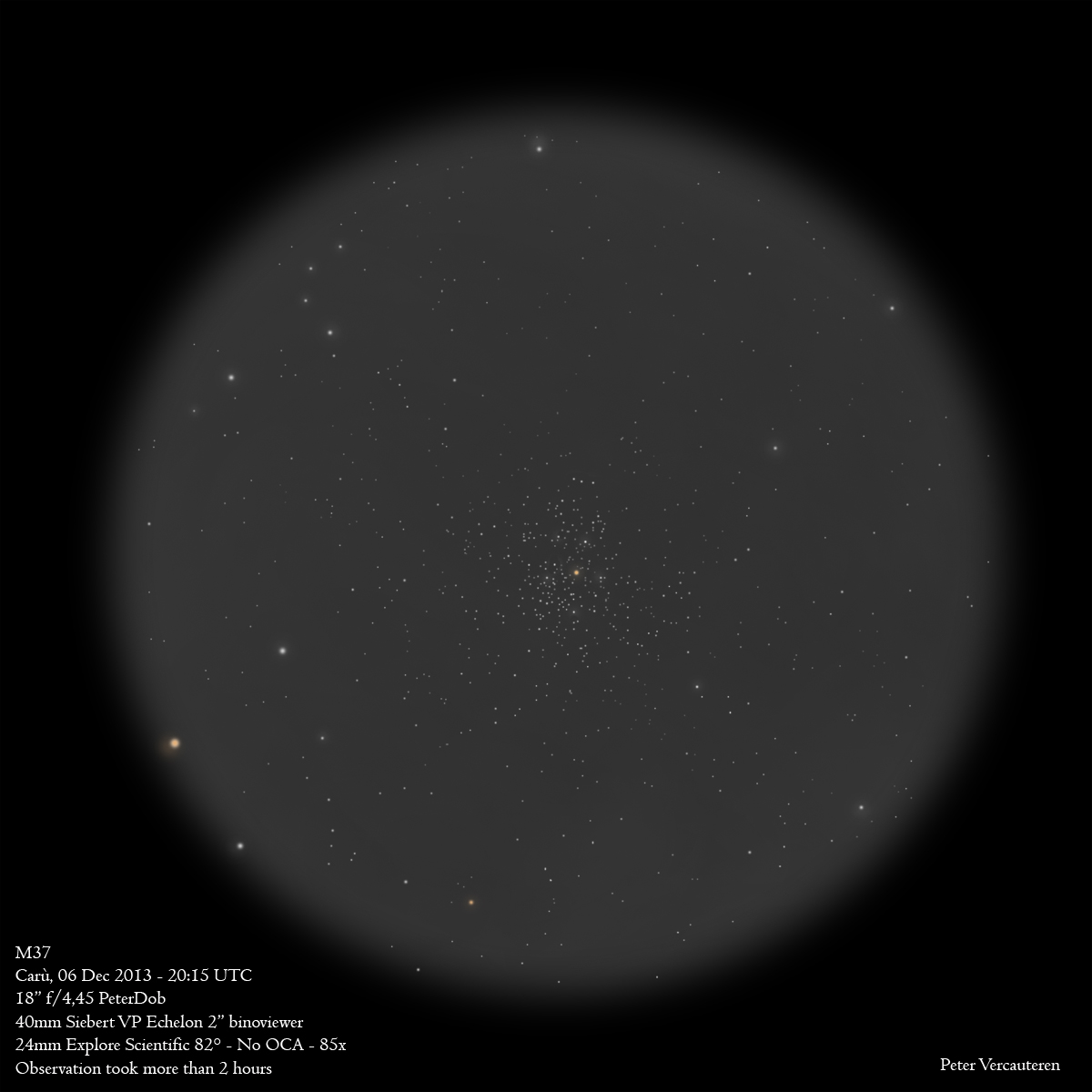
‘m sure that most of my fellow astronomy artists will agree with me when I say that the most challenging objects to draw are complex open clusters. There are just so many stars filling the FOV that it’s nearly impossible to draw them all and most of the time motivation’s already gone before you’ve actually started drawing. But this time I persevered and after more than two hours behind the eyepiece I think that I’ve more or less caught everything that I saw. Well, probably not though because after such a long observation time my head was literally spinning. But here it is:
– Object: M37
– Location: Carù, Italy (province of Reggio Emilia), elevation 770m
– Date: 06 Dec 2013 – 20:15 UTC (start of observation…)
– Media: Ordinary graphite pencil on white paper, followed by several hours of elaboration on the PC
– Equipment: 18″ f/4,45 home-made PeterDob (Galaxy optics), 40mm Siebert VP Echelon 2″ binoviewer and a couple of 24mm Explore Scientific 82° eyepieces (no OCA), resulting in a mag of 85x
– Conditions: fairly cold but the sky was wonderfully transparent. No seeing measured, limit visual mag +/- 6,3
Peter
